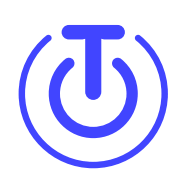Mission
“Map Academy’s mission is to help youth find their way with individualized roadmaps designed to promote success in students for whom traditional school has not worked. At Map Academy, a student-centered academic experience, combined with a highly supportive culture and career development opportunities, equips students with the knowledge, mindsets, and skills they need to meet the high standards necessary for postsecondary education and meaningful employment.”
Demographics
Map Academy serves a diverse population of students. Over 16 percent of students identify as Latine, and 4.5 percent identify as Black. More than 54 percent of students are diverse learners who receive special education services. 65 percent of students receive free or reduced-price lunch, and nearly 80 percent of students are considered to have high needs, according to the school.
Experience Overview
Map Academy is an alternative public high school in Massachusetts that offers students a different path to graduation than traditional high schools. Students who enroll at Map Academy are often seeking flexibility to better balance their personal responsibilities and life circumstances. Many students have had to navigate challenges in their young adulthood, and the school offers them a chance to overcome these barriers and re-engage with their education. Map Academy offers an asynchronous, competency-based learning environment alongside essential wraparound services, both of which are designed to cultivate success in students positioned farthest from opportunity.
Although Map Academy is not a virtual school, the flexibility of their schedule and ability to progress at one’s own pace closely resemble the essential elements of a typical online program. The school’s custom student-facing tracker offers students access to all coursework asynchronously, which allowed students to continue progressing through their courses seamlessly amid the disruptions caused by the COVID-19 pandemic.
Another cornerstone of the school’s model is its career development program, which embeds career exploration and postsecondary planning into students’ individualized learning plans. This practical program encourages students to explore their postsecondary options and connect learning that happens in school to their lives beyond graduation. Students have opportunities to complete internships, dual-enrollment programs, and/or career training as they progress toward graduation.
Learning In Action
Competency-based, asynchronous learning is the instructional foundation of Map Academy’s personalized approach. At Map Academy, students work in classrooms with teachers providing instruction and support, but they move through the curriculum at their own pace. This approach allows for students to receive differentiated instruction, more so than what is often possible in traditional classrooms.
Students own their learning journey at Map Academy, which means they are responsible for pacing themselves and their work in ways that meet their needs and abilities to stay on track for graduation. This autonomy helps students chart their own paths to success while developing the self-directed skills that are necessary for life after high school.
Students work in teams in learning studios, which are interdisciplinary classrooms where the focus is on collaborative and cooperative learning rather than traditional instruction. Students are assigned to one of three learning studio teams but frequently work with other staff and teams on various projects. At Map Academy, learning studios are both physical spaces that are uniquely designed for the school as well as conceptual groupings of adults and students to provide ongoing support.
Each student has an individualized success plan, a living document that tracks their progress toward graduation and their post-secondary plans. All students graduate with two career development credits and a post-secondary plan, which they must present as part of their capstone in their final year.
Teaching In Action
Teachers act as active facilitators, coaches, and advisors, designing strategies and interventions suited to each student’s individual needs, such as one-to-one support or a mini-lesson to a subset of students. Teachers focus on instruction at the “learning edge,” using a data-driven approach to find out exactly which level students are coming in at and meeting them there. The staff utilizes NWEA testing to discover students’ skill levels and utilizes adaptive software (e.g., ALEKS, IXL) to provide appropriate and relevant instruction.
The school staff embodies Zaretta Hammond’s concept of “warm demanders,” focusing explicitly on building trust and rapport with students while maintaining high academic expectations. To keep students progressing towards their goals, the school has incorporated weekly “rundowns,” during which they check in on students’ weekly progress, engagement with teachers and coursework, data around credit accumulation and test scores, and more. Several different “rundowns” occur weekly and are conducted by administrators, social workers, and support staff to ensure all students are accounted for and continue to be engaged with the school.
Map Academy has incorporated a primary-person model, in which each student has an adult “anchor” with whom they have a close mentoring relationship. Anchors focus on educating the whole student and help provide wraparound support, ranging from basic needs to transportation to housing to academic resources.
Teachers also lead seminars, which are synchronous, in-person learning experiences. Seminars serve as a way to re-engage students in group learning, especially those who have experienced traumatization from previous traditional school environments. Teachers incorporate project-based learning and cycles of inquiry into seminars, and encourage students to work together and collaborate. Seminars occur twice per day and although students are highly encouraged to participate in these shared learning experiences, there are also options for them to engage asynchronously through the school’s tracker if they don’t feel ready for group learning.
Associated Resources
The strategies and artifacts below explore some of the best practices used by Map Academy, which can be replicated, adapted, and implemented across different school settings.
Conditions for Success
- Learning Materials & Tools - The school initially partnered with another alternative high school in New York City, called Bronx Arena High School, which allowed Map Academy to use their courses (specifically designed for alternative education). Over time, Map Academy shifted toward positioning their own teachers to design and build their courses.
- Student Support Programming - The school has a strong emphasis on whole-child support and accordingly provides wraparound support for each student, encompassing emotional wellbeing, basic needs, transportation, food, housing, and more.
- Community & Culture - The school focuses on providing adult support for students by incorporating mentor teachers (called “anchors”), who assist students socially, emotionally, and academically throughout their academic career.
- Technology & Data Infrastructure - Bronx Arena High School allowed Map Academy to use their student-facing platform in a tracker that is specifically designed for alternative students. This allowed Map Academy to use a platform that already existed to get started in a more seamless way.
- Physical Environment - The school building is custom designed into zones, which allows for a seamless flow between classroom spaces (learning studios), student support spaces, and common areas. The school also has laundry and shower facilities as part of their wraparound support offerings.
- Time - The school has a flexible schedule, which includes evening studio hours each day from 4:30 to 6:30 PM. This schedule provides students who may have other responsibilities during the day with an opportunity to complete work and receive necessary support in the evening.
Other Key Highlights
Map Academy is highly supportive and engaged in each student’s life. When students are absent, teachers reach out and check on them, even visiting their homes to ensure they do not fall off-track. Students in need of counseling and other supports are also connected with the help they need. Breakfast, lunch, and snacks are provided free of charge for all students.
Map Academy has also released the Education Disruption podcast and video library, an archive of stories about the successes and challenges of “doing high school differently,” shared directly by students and staff at the school.
Explore More School Models

My Tech High is a personalized virtual program, administered by K-12 public...

VLACS is a nonprofit charter school in NH that offers elementary, middle, and...



